Sixties
City presents
a wide-ranging series of
articles on all aspects of the Sixties, penned by the creator of the iconic
60s music paper Mersey
Beat
|
Sixties
City presents
a wide-ranging series of
articles on all aspects of the Sixties, penned by the creator of the iconic
60s music paper Mersey
Beat
|
|||||
|
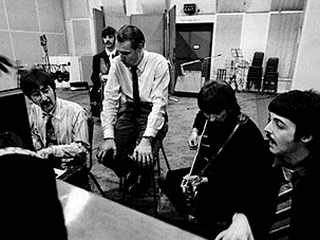 |
When
the album was untitled and recording began, it was said to have a theme
of The Beatles’ childhood memories of Liverpool. In December 1966, three
tracks for the proposed album were recorded: ‘When I’m Sixty Four’, ‘Strawberry
Fields Forever’ and ‘Penny Lane.’ The last two tracks evoked memories
of Liverpool. As it turned out, recording sessions were taking longer
than in the past and EMI needed a new Beatles single in February 1967.
As a result, George Martin decided to
issue ‘Penny Lane’ and ‘Strawberry Fields’
as a double 'A' side.
He regretted the decision of making the single a double ‘A’ because this split sales as far as the system of compiling chart statistics were concerned and it became the first single since ‘Please Please Me’ not to reach the Number 1 spot, being kept off that position by Engelbert Humperdinck with ‘Release Me.’ The theme of Liverpool reminiscences was then dropped. The new theme concerned a mythical band, which led to it being called the first ‘concept’ album. A Beatles associate, Tony Bramwell, said that at one time the group were considering calling the album, ‘One Down, Six To Go,’ in reference to the number of albums they had committed themselves to record under a new contract. This is likely to have been just an example of the Beatles humour. The name ‘Sergeant Pepper’s Lonely Hearts Club Band’ was devised and the album took five months and almost 700 hours of studio time to record. It is said that Paul McCartney thought up the original idea. He’d suggested, “Why don’t we make the whole album as though the Pepper band really existed, as though Sgt Pepper was doing the record?’ Paul at one time also suggested that The Beatles wear Salvation Army type uniforms to promote Sgt Pepper, but the others talked him out of it and the costumes they wore for the promotion were made by Maurice Burman’s, the theatrical costumiers. The music was so intricate, complex and innovative that it staggered other artists who had been seeking to outdo The Beatles. Even more remarkable is the fact that this tour de force was recorded entirely on a four-track machine. George Martin was to comment, “Technically, it was a bit of a nightmare. If I’d had eight or sixteen track recording facilities I could have done a much better job. I only had four tracks and I had to stretch it to the limits”. |
|
Another innovation was to segue the tracks on the album. John Lennon said,
“It makes the whole album sound more like a continuous show. We’ve put everything
in a sequence, which is balanced just like a programme of stuff for a concert.
It should be listened to all the way through so there’s no point in having
a silence every few minutes”. Brian Epstein disagreed and told the Beatles’
publicist Tony Barrow, “People still want to drop the needle on to a favourite
bit and play it more often than the rest of the album”. The cover of ‘Sergeant
Pepper’s Lonely Hearts Club Band’ is the most famous cover of any music
album and one of the most imitated images in the world. The original idea
of having a host of celebrities, living and dead, featured on the cover
was, once again, Paul McCartney’s. He said, “We want our heroes together
here. If we believe this is a very special album for us, we should have
a lot of people who are special to us on the sleeve with us”. Both EMI and Brian Epstein disagreed with Paul’s idea for the sleeve as they felt it didn’t give enough prominence to The Beatles themselves. In fact, Epstein hated the idea. When he was due to return to London from New York by plane, he suddenly had a premonition that the airplane would crash and he would be killed, so he wrote a note and gave it to his attorney Nat Weiss. The note read: 'Brown paper jacket for Sgt Pepper’s Lonely Hearts Club Band'. Robert Fraser, a prominent figure in the London arts scene was brought in to advise on the album package and welcomed Paul’s idea, at the same time suggesting that another design, in a psychedelic style, submitted by the design group The Fool, would soon appear dated. Fraser, together with sleeve designer, the artist Peter Blake, sent The Beatles a sheet of paper recommending that they write down their twelve most popular heroes from throughout history. A number of characters originally chosen by The Beatles didn’t actually appear in the finished design. They included Brigitte Bardot, Rene Magritte, Alfred Jarry, the Marquise de Sade, Nietzsche, Lord Buckley, Richmal Crompton and Dick Barton. Two of John Lennon’s suggestions, Adolph Hitler and Jesus Christ, were vetoed as it was considered their appearance would offend people. |
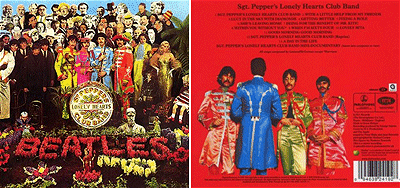 |
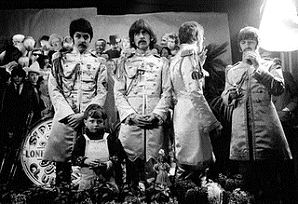 |
When Sir Joseph Lockwood, head of EMI, arrived on the set he asked for the
figure of Mahatma Gandhi to be removed as he thought it would offend record
buyers in India – and India was a big market for EMI. In an early layout
of the set, Gandhi had been placed behind the figure of Diana Dors, there
was a figure of Bette Davis, in her Elizabeth 1 costume, behind Ringo and
also an Albert Schweitzer. Since there were so many living figures featured on the cover, EMI insisted that permission be obtained from each of the persons represented. This was an extremely complex and time-consuming job and Brian Epstein commissioned his former secretary Wendy Hanson to undertake the task. A large set was assembled at photographer Michael Cooper’s studio in Flood Street, Chelsea, and the tableau was created by artist Peter Blake and photographed by Cooper. As it turned out, the full cast of figures probably does not reflect the individual heroes of each member of The Beatles completely. Ringo didn’t bother to make a list, a lot of John and Paul’s suggestions were either vetoed or simply omitted and George chose mostly Indian gurus. Fraser included numerous American painters who were clients of his and there were a number of film stars who probably had no influence on The Beatles whatsoever. There was certainly no representation of their original musical influences – Little Richard, Buddy Holly, Chuck Berry, Gene Vincent and Carl Perkins, for example.Even Paul McCartney couldn’t figure out why his choice of Brigitte Bardot – the favourite of each of The Beatles in the early 60s – wasn’t included, yet Diana Dors was. Not every figure on the album cover has been identified as some figures are almost obscured by other cut-outs. The ornate drumskin in the centre of the album cover was conceived by Peter Blake and The Beatles, who commissioned a genuine fairground artist, Joseph Ephgrave, to paint it. Madame Tussauds lent a total of nine waxworks for the cover photograph – all four Beatles, Diana Dors, Lawrence of Arabia, George Bernard Shaw and Sonny Liston. The likelihood is that because Tussauds had those waxworks not on display and available for use on the tableau, the Dors, Lawrence, Shaw and Liston were included on the cover and were unlikely to be part of The Beatles individual choices. |
| Other
interesting features on the cover include some stone statues from the gardens
of individual Beatles; a garden gnome; a flower display spelling ‘Beatles’;
flowers in the shape of a guitar; a cloth figure of Shirley Temple and a
doll with a knitted jumper with the words '‘Welcome Rolling Stones’ on it.
Despite rumours, there are no marijuana plants on display – they are actually
pepperonia plants. ‘Sgt Pepper’s Lonely Hearts Club Band’ was the first album to have a gatefold sleeve – was the first to include a full set of printed lyrics and it also came with a cardboard sheet of cut-outs of a moustache, a picture card, stripes and badges. The Beatles were photographed in front of the tableau in their Sgt Pepper uniforms with Paul holding a cor anglais, Ringo holding a trumpet, John holding a French horn and George holding a flute. A bizarre rumour sprang up in America in October 1969 that Paul McCartney had died, that led to fans seeking ‘clues’ in The Beatles songs and on album covers which could back up the theory. On the ‘Sgt Pepper’ sleeve it is alleged that the hand raised above Paul’s head was an Indian symbol of death and that the flowers represented a symbolic grave. In the centrefold of the album, Paul is wearing a badge with the initials OPP, which fans suggested meant ‘Officially Pronounced Dead.’ (A fold makes it appear as OPD). The patch on Paul’s sleeve does sport such initials, but they stand for Ontario Provincial Police. Paul was given the official patch while The Beatles were appearing in Toronto on Tuesday 17th August 1965. Incidentally, one of the members of the security force guarding The Beatles at the time was called Sergeant Pepper. The back cover has George, John and Ringo with a back view of Paul. Fans said that this was because someone substituted for the dead Paul. This wasn’t so, as other pictures from the same session reveal that it was Paul in the photograph. |
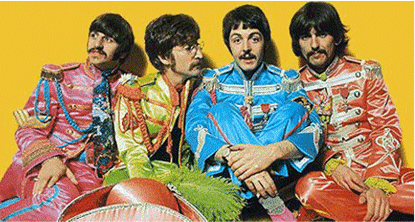
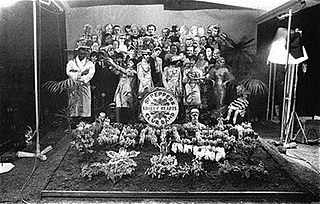 |
| The first
airing of the album on the radio took place at 5.00pm on the evening of
Friday 12th May 1967, when the pirate
station Radio London broadcast the tracks. Although American stations
had broadcast tracks prior to this time, Radio London claimed a ‘world exclusive’
because they said they were the first to play the album in its entirety
as ‘Album of the Week.’ A special press launch for the album was held at
Brian Epstein’s house in Chapel Street, Mayfair, on Friday 19th May 1967. When EMI released the album on Parlophone PCS 7027 on Thursday 1st June 1967 the reaction was staggering. It sold 250,000 copies in Britain during the first week and topped the half million mark within the month. It was issued in America on Capitol SMAS 2653 on Friday 2nd June 1967 with advance orders of over a million copies and it sold over two and a half million copies there within three months. It also topped the charts all over the world. The album was No.1 in Britain for 27 weeks and topped the charts for nineteen weeks in America, remaining in the charts there for a total of 113 weeks. The album received four Grammy Awards during the year of release: (1) Best Album. (2) Best Contemporary Album. (3) Best Album Cover. (4) Best Engineered Album. In 1977 the British Phonogram Industry announced a special award to celebrate 25 years of British music: Best British Pop Album 1952-1977. It went to ‘Sgt Pepper’s Lonely Hearts Club Band’. The album tracks were: Side One: ‘Sgt Pepper’s Lonely Hearts Club Band’. ‘With A Little Help From My Friends’. ‘Lucy In the Sky With Diamonds’. ‘Getting Better’. ‘Fixing A Hole’. ‘She’s Leaving Home’. ‘Being For The Benefit Of Mr Kite’. Side Two: ‘Within You, Without You’. ‘When I’m Sixty Four’. ‘Lovely Rita’. ‘Good Morning Good Morning’. ‘Sgt Pepper’s Lonely Hearts Club Band (reprise)’. ‘A Day In The Life’. |
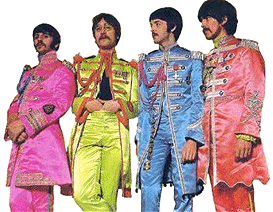 |
| Who
and What is on the cover? The identifiable figures and items are: 1. Sri Yukteswar Giri One of four Indian gurus selected by George. Yukteswar was Sri Yogananda’s guru and author of the treatise ‘The Holy Science’, which deals with the underlying unity of the Bible and the Hindu scriptures. 2. Aleister Crowley A British magician, specialising in the black arts, who was known as ‘The Great Beast.’ He was once the subject of a novel by W. Somerset Maugham called ‘The Magician.’ During his life he was involved in many scandals and was referred to in the press as ‘the most evil man in Britain.’ He was a practitioner of ‘sex magic’ and wrote many books on the occult. 3. Mae West The legendary film star who, during the Second World War, had a life-saving device named after her – an inflatable rubber jacket. Her films included ‘My Little Chickadee’ in which she starred with W. C. Fields, who is also featured on the cover. Ringo Starr appeared with Mae in the film ‘Sextette’ and Beatles aide Derek Taylor was once employed to handle her publicity. When first approached for permission to use her image, Mae turned down the request, stating, ‘What would I be doing in a Lonely Hearts Club?’ The Beatles wrote to her, each signing the letter, and she then agreed. 4. Lenny Bruce An American comedian who gained a cult following because of his abrasive comedy routine which shocked audiences with its liberal use of four-letter words. He died of drug abuse and was the subject of a film biopic, which starred Dustin Hoffman, and a book by Albert Goldman. |
| 5.
Karl Heinz Stockhausen A contemporary German composer, born in 1928, who was noted for his use of electronic sounds. 6. W. C. Fields He was one of Peter Blake’s choices. Fields was an eccentric American screen comedian. Born Clarke William Duckenfield in 1880, his films included ‘Never Give a Sucker An Even Break’ and ‘My Little Chickadee.’ He was the subject of a film biopic that starred Rod Steiger. 7. Carl Gustav Jung A prominent psychiatrist, born in Switzerland, who studied dreams, the I Ching and various esoteric subjects. His theory of ‘synchronicity’ intrigued Sting of The Police who named one of the group’s albums after it. During the 1930s Jung had a dream in which he claimed he saw the future. In his dreams he was in Liverpool, which he called ‘the city of light.’ 8. Edgar Allen Poe He was John Lennon’s choice. Poe was an American author, creator of the modern detective novel and several classic horror tales, including ‘The Fall of the House of Usher’ and ‘The Pit and the Pendulum.’ He died of a weak heart in 1849, caused by excessive drinking. 9. Fred Astaire Hollywood’s premier star of the dance musical, his films include ‘Top Hat’ and ‘Funny Face.’ He was featured in John Lennon’s ‘Imagine’ film. 10. Richard Merkin A contemporary American painter, one of several featured on the sleeve. Most likely a choice by Robert Fraser. 11. The Vargas Girl A pin up by the artist Alberto Vargas. 12. Leo Gorcey Leo Gorcey was selected to appear on the Sgt Pepper tableau and is, in fact, featured on some of the preliminary cover photographs. However, when he was approached for permission to use his image, he insisted on receiving a fee of £500 for it, so his image was taken out. 13. Huntz Hall A screen comedy actor who starred in dozens of 'Dead End Kids' and 'Bowery Boys' movies in the 1930s and 1940s. He was an original member of the Dead End Kids, who also included Leo Gorcey, Gabriel Dell, Billy Halop and Bobby Jordan. Hall died in Hollywood on 1st February 1999, aged 78. 14. Simon Rodia A minor folk artist who was also a sculptor and designer. In 1954 he completed the famous Watts Tower, an unusual architectural structure of pottery and cement on a steel framework. Not likely to have been one of the Beatles’ choices. 15. Bob Dylan America’s leading solo artist on the Sixties and a friend of The Beatles. His real name was Robert Zimmerman. 16. Aubrey Beardsley One of the most controversial artists of the Victorian age whose career was almost ruined by a scandal caused by his series of erotic drawings (John Lennon’s erotic drawings also caused a scandal!). He suffered from ill health from the age of six and died at the age of 25. 17. Sir Robert Peel A former Prime Minister of Great Britain who originally formed the Conservative Party. Born in Bury, Lancashire in 1788, he died in 1850. Apart from repealing The Corn Laws, he established the police force in Britain; hence early policemen were nicknamed ‘peelers.’ 18. Aldous Huxley A noted British author whose most famous work is the novel ‘Brave New World’. He explored the use of hallucinogenic drugs in his book ‘The Doors of Perception’, a non-fiction work which inspired Jim Morrison to call his group The Doors. John Lennon was very influenced by him and this is arguably one of John’s choices. Huxley died in 1963. |
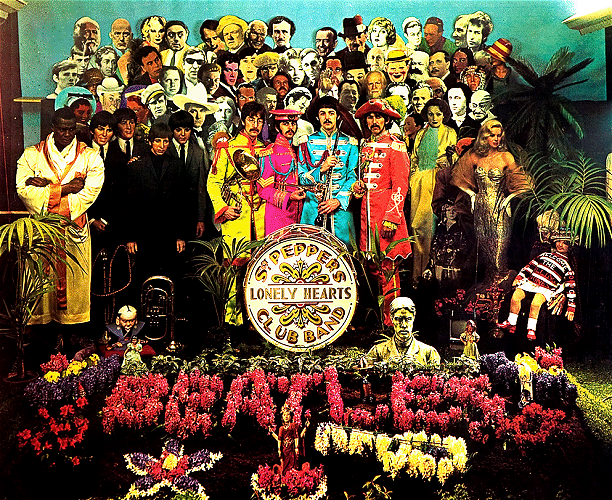 |
|
Article
Text
UK
web hosting by
|